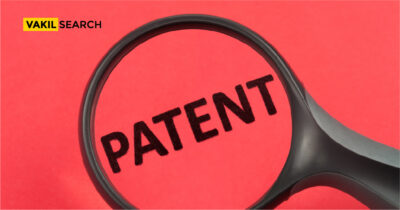Design patents are granted to the owner of a distinctive artistic, ornamental, or aesthetically pleasing design that can be applied to articles of manufacture. In this article, we shall see what is the Priced of a Are Indian design patents reasonably
Design Patents: What Are They?
The visual design of an object is protected by a design patent, which is a type of intellectual property. The Designs Act, 2000 governs a design patent in India. The primary focus of a design patent is the appearance of the invention rather than its functionality. The term of a design patent in India is 10 years, and the price for filing a design patent is ₹10,000. The price for submitting a design patent application in India is ₹5,000, while the price for renewing a design patent is ₹3,000.
India has a set process for obtaining a design patent. The applicant who owns the proprietary rights to the invention must submit a complete application.
Details to be submitted:
- The applicant’s full name and the address
- Two copies of the images from all the sides of the invention or the article
- A legal statement to show if the applicant is an individual or a company
- Requisite design fee
- A brief explanation of the application of the invention.
What Are the Benefits of a Design Patent?
A design patent is a type of intellectual property used to protect an object’s unique visual design. In India, design patents are currently governed by the Designs Act, 2000.
There are several benefits to filing for a design patent, some of which include:
- Protection for your unique design: With a design patent, you can prevent others from copying or imitating your design, giving you a competitive edge in the market.
- Increased value of your product: There is no doubt that a design patent can add value to your product and make it more attractive to consumers.
- Greater legal certainty: By registering your design, you will have greater legal certainty and will be able to enforce your rights. In case someone copies or imitates your design, you will be able to enforce your rights.
- National and international recognition: Your business can quickly expand into new markets with a registered design because registered design registration are recognised nationwide and internationally.

Stage 1: Invention Disclosure
By signing a non-disclosure agreement, you disclose your invention to the patent professional (patent agent). This is where you should provide each known fact about your invention and a description diagram and experimental results (if any). Be as thorough as possible.
Stage 2: Novelty Search (Patentability Search)
The professional charges at this stage range from ₹12,000 to ₹15,000 rupees. During this phase, patent professionals perform extensive prior art searches in all databases, including patents, articles, theses, etc. A patentability search report is produced based on the closest prior art found for your invention.
Stage 3: Decide to File a Patent Application
After reviewing the patentability search report and discovering the closest prior arts to your invention, you can decide whether to file a patent application. To qualify for a patent, an invention must have an ‘inventive step’ compared to existing prior art. Your invention will be considered inventive when it has either a ‘technical advance’ or an ‘economic significance’ or both over existing prior arts.
As soon as you decide to file a patent, the next step is to draft the patent application.
Stage 4: Patent Drafting (Patent Writing)
Patent drafting prices range from ₹30,000 to ₹35,000 The drafting of a patent application requires both technical (field of the invention) and legal knowledge (Indian patent act). Patents are technically legal documents, as you may know. In many cases, inventors who try to write their own patent applications do so from a completely technical perspective. If written as a technical document, your patent application will be of little value without considering legal aspects. All the work you put into research and development could be for nothing. Thus, the proper patent professional (patent agent) with appropriate experience can remarkably enhance the value of a patent application.
Stage 5: Filing a Patent Application
The patent application can be filed in the prescribed manner after you have reviewed the patent draft and are satisfied with its scope and technical details. To do so, use the appropriate forms and pay the appropriate price. In order to submit a patent application at the patent office, you will need to pay a priced of ₹1600, ₹4000, or ₹8000 (depending on the type of applicant).
Unless you request early publication (priced listed below), the patent application will be published after 18 months.
Stage 6: Request for Examination
The application price is ₹4000, ₹10000, or ₹20000 (depending on the type of applicant). A request for examination must be made within 48 months after the patent application’s filing date, along with the prescribed form. You can use this form to ask the Indian patent office to examine your patent application.
Stage 7: Responding to Objections in the Examination Report
The examiner generally includes prior art (documents that existed before the filing date) similar to the claimed invention in the first examination report, and the applicant receives a copy.
Step 8: Respond to Objections.
An examination report will generate some objections for the majority of patent applicants. You should analyse the examination report with a patent professional (patent agent) and develop a response to the objections raised in the examination report.
An investor has an opportunity to communicate how his invention is new or differentiated from prior art found in the examination report. During the patent examination, the inventor and patent agent attempt to convince the controller that the invention is patentable and meets all the criteria for patentability.
Step 9: Grant of Patent
Upon meeting all patentability requirements, the application would be considered for a grant. Patents are published in the Patent Journal, which is published periodically.
Stage 10: Renewal of Patent
Maintaining a patent for its entire lifetime, which is 20 years from the filing date, requires a renewal price to be paid to the patent office.
Why Vakilsearch
If you’re looking for a hassle-free, efficient and cost-effective way to register your patents, then Vakilsearch is the obvious choice. Here’s why:
1. We have a team of experienced patent attorneys who will guide you through the entire process, from filing your application to helping you secure registration.
2. We offer a flat-fee pricing structure, so you’ll know exactly how much it will cost to register your patent with us.
3. We have a strong track record of success in helping our clients secure patent registration in India.
4. We offer a range of value-added services that can save you time and money, such as our free prior art search service.
5. We’re an ISO 9001:2008 certified company, so you can be confident that we operate to the highest standards of quality and customer service.
Conclusion
Design patents in India are relatively inexpensive when compared to other countries. The official price for filing a design patent application is ₹4,000 (US$60). However, additional prices may be required, such as hiring a professional agent or attorney. Overall, the price of obtaining a design patent in India is fairly reasonable and should not deter someone from seeking protection for their innovative design.
Also, Read:










